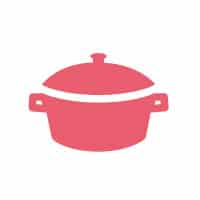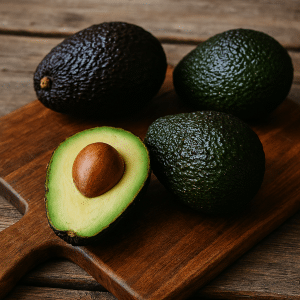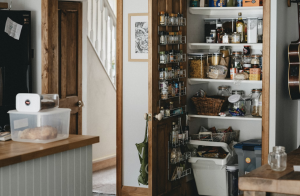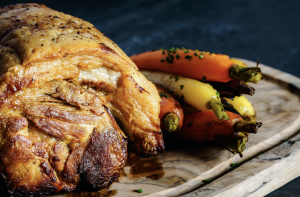Bologna sandwiches are a childhood favorite that many of us still reach for as adults.
This smooth, pink lunch meat sits in millions of refrigerators across America, ready to be slapped between two slices of bread for a quick meal.
But have you ever wondered what’s actually in that slice of bologna? As a nutritionist, I see too many people eating foods without understanding their nutritional impact.
Whether you’re packing lunch for your kids or grabbing a quick bite yourself, knowing the facts about bologna can help you make better choices for your health and your family’s well-being.
The Real Scoop on Bologna Nutrition
Bologna might look simple, but its nutritional profile tells an interesting story. Let me break down what you’re really getting when you bite into that sandwich.
Common Types of Bologna and Their Nutrition Facts

Not all bologna is created equal. The type you choose makes a real difference in what nutrients you’re getting. Here are the three most common varieties you’ll find at the grocery store:
Beef and Pork Bologna
- Serving Size: 1 oz (about 28g)
- Calories: 87
- Protein: 4.3g
- Fat: 7g
- Carbohydrates: 1.6g
- Sodium: 209mg
Chicken, Pork, and Beef Bologna
- Serving Size: 1 slice (about 28g)
- Calories: 84-90
- Protein: 2.8-4.3g
- Fat: 7.3g
- Carbohydrates: 1.6g
- Sodium: 258mg
Pork Bologna
- Serving Size: 100g (about 3.5 oz)
- Calories: 247
- Protein: 15g
- Fat: 20g
- Carbohydrates: 0.7g
- Sodium: 907mg
Quick Comparison Table
| Bologna Type | Serving Size | Calories | Protein | Fat | Carbs | Sodium |
|---|---|---|---|---|---|---|
| Beef & Pork | 1 oz | 87 | 4.3g | 7g | 1.6g | 209mg |
| Chicken/Pork/Beef | 1 slice | 84-90 | 2.8-4.3g | 7.3g | 1.6g | 258mg |
| Pork | 100g | 247 | 15g | 20g | 0.7g | 907mg |
What These Numbers Mean for Your Health
Let’s talk about what these nutrition facts actually mean for your body and your daily eating plan.
The Good News About Bologna
Bologna does provide a decent amount of protein, which your body needs for building and repairing muscles. The protein also helps you feel full longer, which can prevent overeating later in the day.
If you’re watching your carb intake, bologna is a good choice, with less than 2 grams of carbs per serving. It won’t spike your blood sugar. Sometimes we need quick, easy protein sources, and bologna delivers on this front.
It doesn’t require cooking and stores well in the fridge, making it a convenient option for busy days.
The Not-So-Good News
This is where bologna gets tricky; the sodium levels are quite high. Even a small serving can contain 200-900mg of sodium.
To put this in perspective, the recommended daily limit is 2,300mg, so that bologna can quickly consume a significant portion of that allowance.
While fat isn’t the enemy, bologna contains a fair amount of saturated fat, and eating too much saturated fat over time may affect your cholesterol levels. Bologna is also a processed meat, which means it often contains preservatives like nitrates and nitrites.
These help keep the meat fresh and give it that pink color, but some people prefer to limit these additives in their diet.
Making Bologna Work in a Healthy Diet

Here’s the thing: I’m not going to tell you to never eat bologna again. That’s not realistic, and it’s not necessary. Instead, let me share some practical tips for including bologna in your diet without derailing your health goals.
Choose Your Bologna Wisely
Not all bologna is created equal, and the brand you pick can make a real difference in your nutritional intake.
- Read the Label: Not all bologna brands are the same. Look for options with lower sodium content when possible. Some brands offer reduced-sodium versions that can cut your intake significantly.
- Go Organic When You Can: Organic bologna typically contains fewer additives and preservatives. While it might cost a bit more, it’s often worth it for the cleaner ingredient list.
- Watch for Nitrate-Free Options: Many stores now carry bologna made without added nitrates or nitrites. These use natural preservatives like celery powder instead.
Portion Control Matters
When it comes to bologna, moderation is key. Two thin slices of bologna (about 2 oz) are plenty for a sandwich. You don’t need to pile it on thick to get satisfaction.
If you’re having bologna for lunch, make sure the rest of your meal includes plenty of vegetables, whole grains, and other nutritious foods to create a well-balanced plate.
Smart Sandwich Strategies
Pair your bologna with whole-grain bread to add fiber and nutrients to your meal. Add lettuce, tomatoes, cucumbers, or any other vegetables you enjoy. These add vitamins, minerals, and fiber while helping you feel full.
Mayo and other high-fat condiments can quickly turn your bologna sandwich into a high-calorie meal. Try mustard, which is lower in calories, or use smaller amounts of your favorite spreads.
Bologna vs. Other Lunch Meats

You might wonder how bologna stacks up against other popular lunch meats. Here’s a quick comparison to help you make informed choices:
- Turkey: Generally lower in calories and fat than bologna, but watch out for high-sodium processed versions.
- Ham: Similar sodium levels to bologna, but often slightly lower in fat.
- Chicken: Usually the leanest option, especially if you choose varieties without added fillers.
- Salami: Typically higher in calories and fat than bologna due to its curing process.
The Bottom Line on Bologna
Bologna isn’t going to win any awards for being a superfood, but it doesn’t have to be completely off-limits either. Like many processed foods, the key is understanding what you’re eating and making thoughtful choices about when and how much you consume.
If bologna is a regular part of your family’s meal rotation, focus on choosing higher-quality options when possible and balancing them with plenty of nutritious whole foods.
Pay attention to portion sizes, read those nutrition labels, and don’t forget to add some vegetables to that sandwich!
Remember, a healthy diet is about the big picture, not perfection in every single food choice.
Frequently Asked Questions
Is Bologna Okay for Kids?
Bologna can be part of a child’s diet in moderation. Kids often love it, and it does provide protein. Just be mindful of the sodium content and try to balance it with other nutritious foods.
Can I Eat Bologna on a Low-Carb Diet?
Yes! Bologna is naturally low in carbohydrates, making it suitable for low-carb eating plans. Just watch the sodium if you’re dealing with blood pressure concerns.
How Often Is It Safe to Eat Bologna?
There’s no magic number, but treating bologna as an occasional food rather than a daily staple is probably wise. A few times a week is reasonable for most people.













